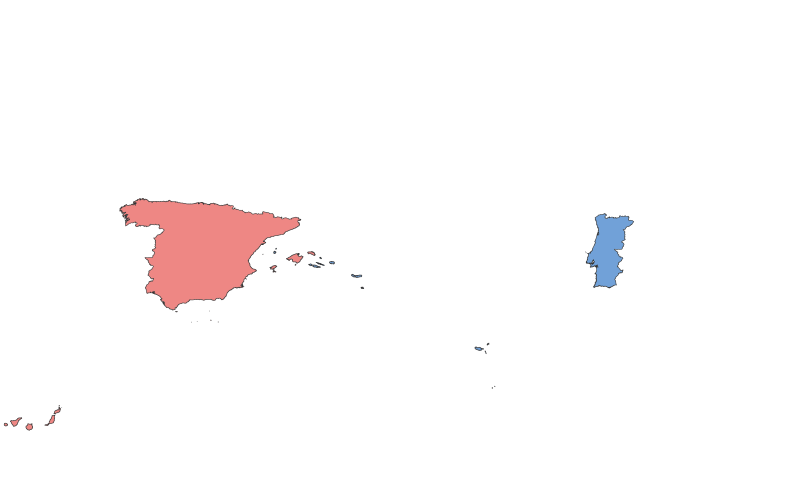Spain vs. Portugal: A Geographical Comparison

Comparison Table
| Category | Spain | Portugal |
|---|---|---|
| Location | Southwestern Europe, borders Portugal, France, Andorra, and Gibraltar | Southwestern Europe, borders Spain and the Atlantic Ocean |
| Size | 505,990 km² (larger) | 92,090 km² (smaller) |
| Climate | Mediterranean (coastal), semi-arid (central), oceanic (northwest) | Mediterranean (south), oceanic (north) |
| Natural Resources | Coal, iron ore, copper, lead, zinc, hydropower | Fish, forests (cork), tungsten, iron ore, uranium |
| Urban Development | Madrid, Barcelona, Valencia (major cities) | Lisbon, Porto, Braga (major cities) |
| Transportation | High-speed rail (AVE), extensive highway network | Well-connected rail and road networks, fewer high-speed lines |
Description
Spain
Spain, located on the Iberian Peninsula, is the larger of the two countries with diverse landscapes ranging from beaches to mountains. Its history is marked by Roman, Moorish, and Christian influences, reflected in its architecture and culture. Spain has a strong economy, driven by tourism, agriculture (olives, wine), and manufacturing. The country is known for its vibrant festivals (e.g., La Tomatina, Running of the Bulls) and flamenco music.
Portugal
Portugal, also on the Iberian Peninsula, is smaller but boasts a long Atlantic coastline. Its history includes the Age of Discoveries, when explorers like Vasco da Gama mapped new trade routes. Portugal's economy relies on tourism, wine production (Port, Vinho Verde), and cork exports. The country is famous for its Fado music, historic cities (e.g., Lisbon, Porto), and picturesque landscapes like the Douro Valley.
Both countries share a rich maritime heritage and are popular tourist destinations, offering distinct cultural experiences despite their geographical proximity.